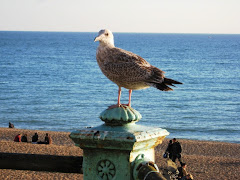
I'm not normally one of those people who wins prizes at anything, but after years of fruitless efforts, I was finally rewarded, courtesy of those nice people at Qype, with a pair of theatre tickets to see Spamalot! at the Palace Theatre in London. The production had been strongly recommended by several friends, and my other half and I were not disappointed!
The plot is very roughly that of the film ‘Monty Python and the Holy Grail’, and a few of the scenes are taken from it almost directly, while other elements are entirely new. The whole thing is bound up together by a huge amount of singing and dancing - there’s scarcely a break between numbers at some points - and it’s all set off by a whole lot of typical Pythonesque silliness, even down to reproducing some of their trademark Terry Gilliam cartoons. Although one or two of the scenes didn’t quite work for me, they were far outweighed by the tears of laughter at other points - a fabulous monk-and-nun dancing routine scene being one of the unexpected highlights.
Python aficionados will get a lot of the ‘in’ jokes, taken from various sketches of the TV series as well as the film, and there’s a huge amount of ripping off and sending up of other Hollywood musicals too - half the fun is working out which bits. It’s also resolutely un-PC (but in a nice way) with plenty of completely gratuitously scantily-clad women dancers, a la Benny Hill. Expect lots of well-loved characters, including the Knights of Ni, the Black Knight, the Enchanter ‘Tim’ and the killer rabbit.
The current version has the lovely Sanjeev Bhaskar as King Arthur and Nina Söderquist as The Lady of the Lake. Both were wonderful, alongside some other choice performances - Jake Nightingale as Sir Lancelot and Andrew Spillet as Patsy spring especially to mind - alongside some stunning (but still very silly) performances in the dance routines. The theatre was packed, so expect to have to fight for a ticket. Just not like the Black Knight...
Recommended!








